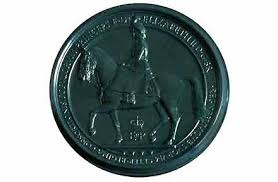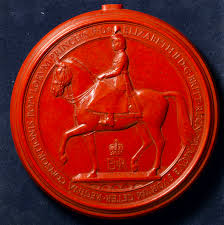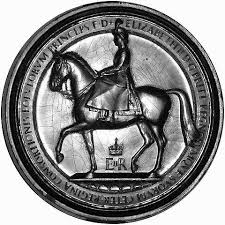

Fans of 'The Crown' (either the series, the British monarchy, or both) may have noticed the reference to Letters Patent (in season 2, episode 3, and/or 1957) when Queen Elizabeth grants Philip the title of Prince:
The Queen has been pleased by Letters Patent ... to give and grant unto His Royal Highness the Duke of Edinburgh, K.G., K.T., G.B.E., the style and titular dignity of a Prince of the United Kingdom of Great Britain and Northern Ireland, Whitehall...His Royal Highness the Duke of Edinburgh shall henceforth be known as His Royal Highness The Prince Philip, Duke of Edinburgh
Letters patent are a rather ancient legal instrument in the form of a written order issued by a monarch or other head of state granting an office, right, monopoly, title, or status to a person or corporation.
The term patent derives from late Middle English, by way of Old French, from the Latin patent- ‘lying open’. The late 14c. saw use of term meaning "open letter or official document from some authority granting permission to do something; a license granting an office, right, title, etc.," shortened from Anglo-French lettre patent (also in Medieval Latin litteræ patentes), literally "open letter" (late 13c.)
The phrase 'letters patent' takes its meaning from the noun 'patent', as does the term 'patently' e.g. in the phrase 'patently obvious', all meaning open or clear. As might be expected there is a counterpart to letters patent, namely letters close, which are personal in nature and sealed so that only the recipient can read their contents. Letters patent are thus comparable to other kinds of open letter in that their audience is wide. Publication being the point of letters patent, it is a convention for the British prime minister to announce that they have left a document they wish to enter the public domain in the library of the House of Commons, where it may be freely perused by all members of parliament.
The Letters Patent were ... written upon open sheets of parchment, with the Great Seal pendent at the bottom ... [while] the 'Litteræ Clausæ,' or Letters Close, ... being of a more private nature, and addressed to one or two individuals only, were closed or folded up and sealed on the outside. [S.R. Scargill-Bird, "A Guide to the Principal Classes of Documents at the Public Record Office," 1891]
Dark green wax seals are affixed to letters patent elevating individuals to the peerage, blue seals authorise actions relating to the Royal family, and scarlet seals appoint bishops and most other patents (including patents for invention). The study of such seals as a source of historical information is known as sigillography.
Common uses of letters patent have been for:
land grants
creation of corporations
creation of government offices
granting city status
granting a coat of arms.
appointment of representatives of the Crown (governors of Commonwealth realms)
appointing Royal Commission
creation of peers of the realm
other titles and pensions
pardons
exclusive rights to inventions
leases of crown land
grants of markets and fairs
rights to import goods
rights to sell
rights to print
The texts of letters patent were copied onto sheets of parchment, which were stitched together into long rolls to form a roll for each year, these being called the 'patent rolls'. The English patent rolls run in an almost unbroken series from 1201 to the present.
Letters patent are an example of extra-parliamentary power by a ruler, somewhat akin to the executive order or presidential pardon of the US presidency. No explicit government approval is contained within letters patent, only the seal or signature of the monarch.

The 'letters patent' has evolved since these monarchic beginnings into the modern intellectual property patent (e.g. the utility or design patent in US patent law) which grants exclusive rights to an invention or design. Here again the written grant is published in a public document so other inventors can avoid infringement, and understand how to practice the patent after expiration (or under license).
The primary source of letters patent in the United States are intellectual property patents and land patents, though letters patent can actually be issued for a variety of other purposes.


The modern use of 'patent' generally refers to the intellectual property right, a license to practice a certain invention and prevent others from doing so, as well as from building, importing, and selling an invention.




















Comments